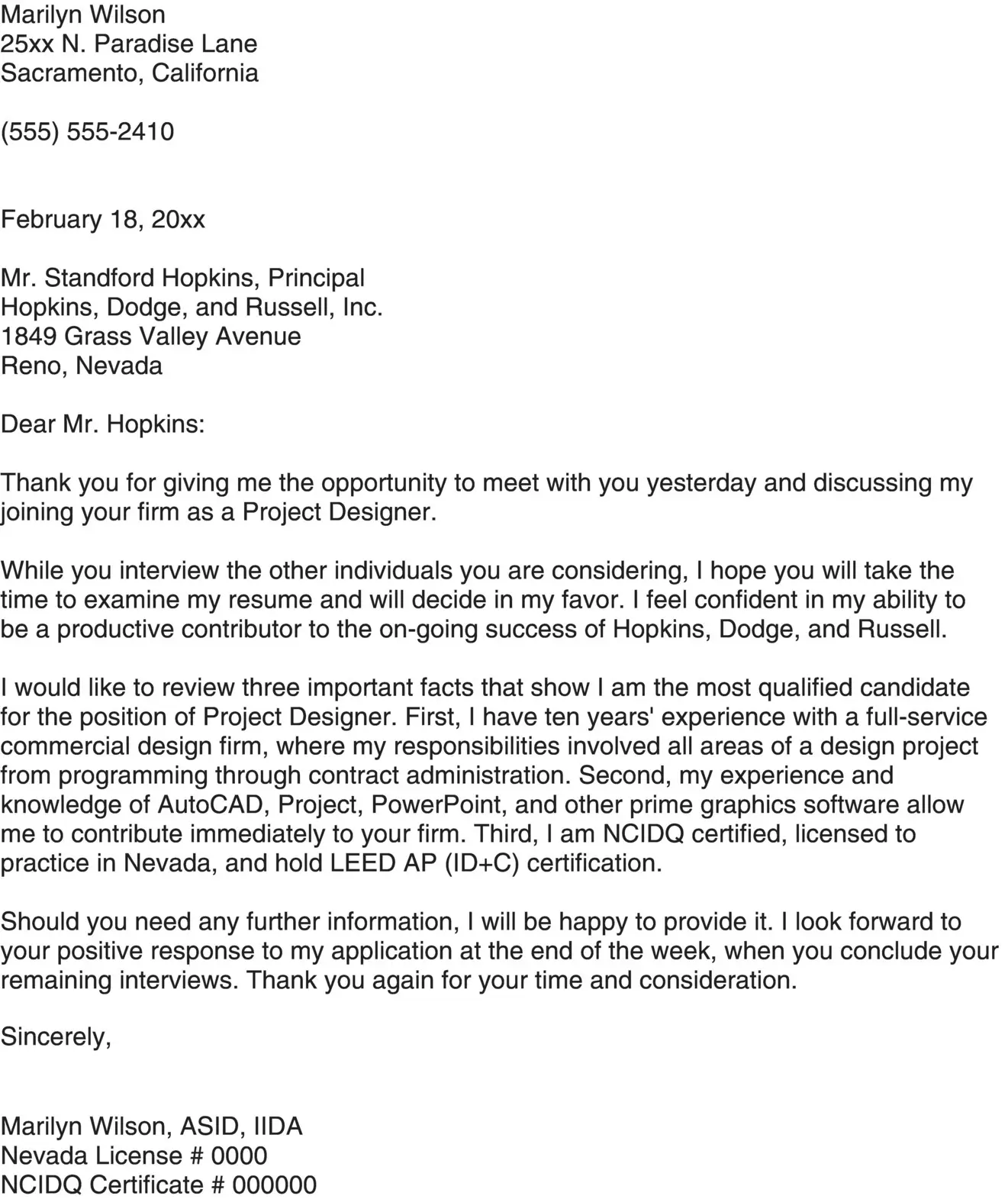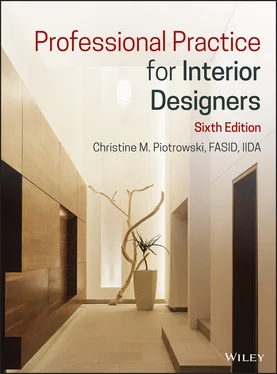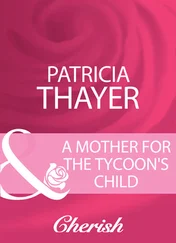Christine M. Piotrowski - Professional Practice for Interior Designers
Здесь есть возможность читать онлайн «Christine M. Piotrowski - Professional Practice for Interior Designers» — ознакомительный отрывок электронной книги совершенно бесплатно, а после прочтения отрывка купить полную версию. В некоторых случаях можно слушать аудио, скачать через торрент в формате fb2 и присутствует краткое содержание. Жанр: unrecognised, на английском языке. Описание произведения, (предисловие) а так же отзывы посетителей доступны на портале библиотеки ЛибКат.
- Название:Professional Practice for Interior Designers
- Автор:
- Жанр:
- Год:неизвестен
- ISBN:нет данных
- Рейтинг книги:4 / 5. Голосов: 1
-
Избранное:Добавить в избранное
- Отзывы:
-
Ваша оценка:
- 80
- 1
- 2
- 3
- 4
- 5
Professional Practice for Interior Designers: краткое содержание, описание и аннотация
Предлагаем к чтению аннотацию, описание, краткое содержание или предисловие (зависит от того, что написал сам автор книги «Professional Practice for Interior Designers»). Если вы не нашли необходимую информацию о книге — напишите в комментариях, мы постараемся отыскать её.
Professional Practice for Interior Designers
Professional Practice for Interior Designers — читать онлайн ознакомительный отрывок
Ниже представлен текст книги, разбитый по страницам. Система сохранения места последней прочитанной страницы, позволяет с удобством читать онлайн бесплатно книгу «Professional Practice for Interior Designers», без необходимости каждый раз заново искать на чём Вы остановились. Поставьте закладку, и сможете в любой момент перейти на страницу, на которой закончили чтение.
Интервал:
Закладка:
If an offer is made and you accept it, a written summary from your perspective is also important. Notes related to salary, benefits, and expected performance levels will be essential in the future to remind you of the agreed‐upon responsibilities on which you will later be evaluated. Many designers now request that offers be put in writing. This writing does not have to be a formal employment contract, as described in Chapter 29, but it should include key points concerning salary, benefits, and work responsibilities.
As soon as reasonable after the interview, prepare some notes on how the interview went. This is naturally very important if you do not get an offer so you can correct any issues in your presentation. But it is also important when you get an offer. Your notes concerning salary and responsibilities are very important, as most interior design jobs do not include a written offer or contract.
Good business etiquette also calls for you to send a thank‐you note or e‐mail to the interviewer immediately after the interview. Considering the number of e‐mails a business owner receives each day, many employers will appreciate a handwritten thank‐you note. A follow‐up phone call is also appropriate in place of a note, especially if the interviewer has so indicated. Thank the interviewer for giving you his or her time; restate your interest in the position, if you are still interested; and follow through with providing any information that you agreed to supply. Figure 6‐5shows a sample letter with suggested content.
If you have not yet received an offer, this courtesy will indicate to the prospective employer that you are a professional. Even if the firm does not have an opening for you, you will be remembered later. If you are interested in a position with the firm but you know that the firm is still interviewing others, it is necessary to keep the design firm interested in you. Be sure to add something in your note or letter summarizing your qualifications and stating how you can contribute to the company.

FIGURE 6‐5. A sample follow‐up thank‐you letter that would be sent after a job interview.
WEB SITES RELEVANT TO THIS CHAPTER
www.asid.orgAmerican Society of Interior Designers
www.careeronestop.orgCareer One Stop (a division of the U.S. Department of Labor)
www.newh.orgHospitality Industry Network
www.interiordesigncanada.orgInterior Designers of Canada
www.interiordesignjobs.comInterior Design Jobs
www.iida.orgInternational Interior Design Association
www.monster.comMonster
www.nahb.orgNational Association of Home Builders
www.carbonmade.comsite to post portfolios
www.slideshare.netsite to post portfolios
You may also want to search the Web sites of other professional associations for career and job‐hunting information. Numerous additional sites can be found by searching topics such as resumes, cover letters, and job interviews.
KEY TERMS
Career objective statement
Career summary statement
Chronological resume
Combination resume
Cover letter
Digital portfolio
Enclosure
Functional resume
Headhunter
Informational interview
Job boards
Key word
Portfolio
References
Resume
Situational interview
WHAT WOULD YOU DO?
1 Sara, working at an office furnishings dealer as a designer, mentions to her boss that a client appears to be ready to order 50 traditional desks and credenzas from a certain manufacturer. The boss, thinking that this will be a good opportunity to get some of this popular desk into inventory, orders an additional 10 units. After the order has been placed, Sara learns, but neglects to tell her boss—for more than a week—that the client has changed his mind and will not order the desks for at least six months. The boss is now responsible for paying for all the desks and credenzas because it is too late to cancel the order with the manufacturer. What might the boss do; what should Sara have done?
2 A good friend of yours who works at another design firm in town tells you about a situation that happened to her two weeks ago. She went on a trip with her boss to an out‐of‐town jobsite, where their client meetings lasted two days. Your friend tells you that her boss made a pass at her. “It wasn't the first time,” she says. “He has made comments at work that I just don't think are appropriate,” she continues.She says that she is quite concerned because she likes working there and in every other respect the firm is a great place to work. “I don't know what to do. I already told this jerk designer that I am not interested,” she confides.
3 Monica has missed work for two weeks twice in the last three months. This is due to an illness of one of her children. She is very experienced at the design of residential interiors and gets good responses from clients, but the absences have become a problem for her manager. Although she is entitled to some sick leave each month, the time she has missed exceeds that amount.Her boss has called her into his office and informs her that perhaps she should look for another job. All the time she has missed is interfering with her performance of her basic duties. Other designers have to pick up her work.Even though she has worked for this company for three years, her boss's attitude disturbs her. She is not sure what to do, but wants to potentially look for another job. She knows her work record will be part of her job history and will likely come up in an interview.
REFERENCE
1 1. Lewin G. Joel, 1996, p. 46.
CHAPTER 7 Ethics and Professional Conduct
Interior designers on occasion will come to an ethics crossroad: One path leads to behavior that is expected of a professional; on the other path are temptations that lead to behavior contrary to ethical standards. Perhaps the temptations result from an omission rather than outright commission, yet the unethical behavior occurs. The decision has consequences for the individual, his or her company and client, and the profession as a whole.
Although the unethical behavior of an interior designer is very unlikely to garner headlines, ethical standards are just as important in the interior design profession as in any other. The expectations and demands for ethical professional behavior in interior design increase as our world continues to become more complex.
If we expect other professionals who affect our lives to behave ethically, interior designers must be held to the same standards. Thus, it is imperative that ethical behavior be treated as more than just a brief discussion in class while students anticipate getting into “more important” subjects. This chapter presents an overview of ethics concepts and issues as they relate to the professional practice of interior design.
After completing this chapter you should be able to:
Explain the importance of ethical standards.
Explain a conflict of interest that might exist between you and your client or between you and a colleague.
Explain why a conflict of interest can be damaging to your professional activities.
Differentiate and explain an example of proprietary and nonproprietary employer information.
Explain how someone's unethical behavior can affect others working in your market location.
Discuss whether commissions or kickbacks are permissible based on professional association's code of conduct.
Читать дальшеИнтервал:
Закладка:
Похожие книги на «Professional Practice for Interior Designers»
Представляем Вашему вниманию похожие книги на «Professional Practice for Interior Designers» списком для выбора. Мы отобрали схожую по названию и смыслу литературу в надежде предоставить читателям больше вариантов отыскать новые, интересные, ещё непрочитанные произведения.
Обсуждение, отзывы о книге «Professional Practice for Interior Designers» и просто собственные мнения читателей. Оставьте ваши комментарии, напишите, что Вы думаете о произведении, его смысле или главных героях. Укажите что конкретно понравилось, а что нет, и почему Вы так считаете.












